One of the iconic “Four Seasons” above Haight Street, the Queen Anne Victorian at 1315 Waller is Winter.
Listed for $2.985 million in May and reduced to $2.75 million in July, the sale of the 2,855 square foot home (per its listing) has just closed escrow for $2.625 million.
No official word on the fate or plans for the existing “incredible architectural detail, and intricate, ornate design” inside, but we’ll keep you posted.
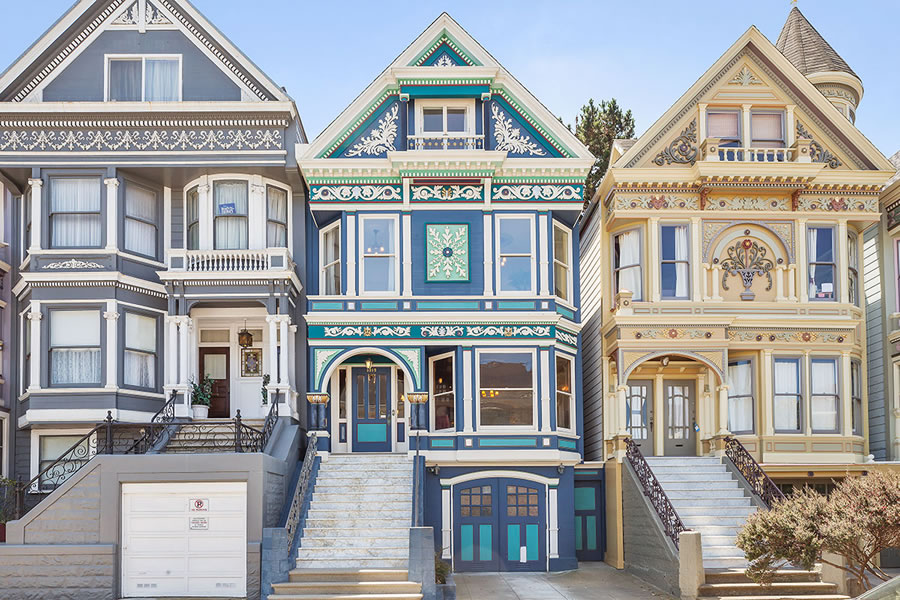
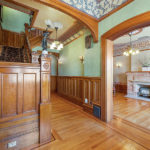
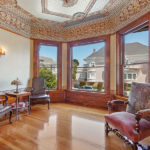
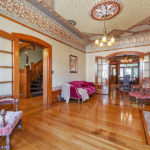
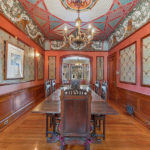
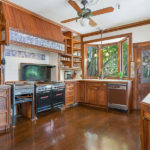
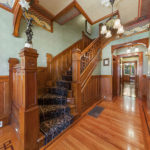
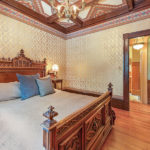
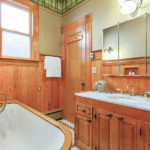
That would be tragic.
Curious how much of the decorative interior painting is historically accurate – such that it wouldn’t necessarily be a “loss” of something historic if it were changed. Victorian color schemes tended to be a lot more muted. The eye-popping colors you see on a lot of Victorian homes in San Francisco are largely a 20th century anachronism & complete fiction.
The more muted colors on the buildings in Oakland’s Preservation Park (a multi-building collection of various Victorian homes relocated to downtown when the Interstate was built through West Oakland) have a far more historically accurate color scheme.
Interior decoration, mostly in the form of wallpaper, was often quite elaborate. The exteriors weren’t as flashy as many modern “recreations”.
That fireplace is odd. Either it was a later addition or cutting edge when the house was built, I don’t know.
The fireplace definitely stands out a bit in this house Those fireplaces are very common in the Sunset and Richmond houses built around the 20s. Besides the mantle, the design and brickwork look almost identical.
And yes, interior decoration was definitely elaborate back then.
Ornate and elaborate, yes. And yes increasing fad in late Victorian for jewel tones Yet, the paintwork on the ceiling and molding ornamentation in the living room and dining room doesn’t immediately scream accurate reproduction. Regardless, none of it looks original (neither the paint nor the wallpaper)
I didn’t mean to suggest in any way that the wallpaper was original. I’m just guessing, but I assume it’s authentic reproduction paper. Some of my neighbors have similar wallpaper, complete with the elaborate bordering. I’ve always assumed it was authentic to the period, but to much more expensive homes. If anything, the papers in the this house are more light and airy than some of the stuff we found hiding under layers of paper in our 1875 Vic (somebody really, really liked busy and brooding!).
I think a layer of plaster and other ornamentation has been removed from the fireplace.
That old brown dishwasher would certainly qualify as a heritage piece.
Obviously this wasn’t the one that had the fire…..
As long as they don’t paint over any of the mill work, we should be content. I can’t see too many owners opting to live with the wallpapers.
Truly hope someone did not buy this to simply rip apart the interior. I can already imagine one day seeing a dumpster up front with all the woodwork thrown into it.
Historically the exteriors were by and large monochromatic, which by the way creates wonderfully subtle relief effects. The detail painting came in the 70’s when these houses could be purchased (or squatted in) easily and enhanced according to the psychedelic tastes of the time.
Example would be the Haas Lilienthal House which was recently repainted to match the original period appropriate colors.
I have some books of original Victorian house design and, yes, the exteriors were usually monochromatic; usually gray, rose, or green. My own Victorian period house had several sections walled up in the early teens. When we took out the added walls, fragments of the original, late 19th c wallpaper were extant. One fragment was flocked and deep red, while another was brown with faux leather details with hand-painted blue birds. Both were pretty subtle and not nearly as garish as this.
I did my first Victorian restoration projects in Oregon before moving to San Francisco. Up there, I recall that the historically accurate exterior house colors were called “railroad colors” because they were literally the pre-mixed paint used to paint railroad passenger and freight cars. These were the deep reds, whites, mustard yellows, pastel greens and chocolate browns from your childhood model train set.
Painting and wallpaper can easily be changed. By the way, I hear that wallpaper is back among traditional people. Of course it never left in some parts of this country and Europe.
What must be preserved is the interior wood and plaster work of houses built before 1930. How we get the Philistine flippers to do this is the question.
Agreed.
Same way we force the Sioux to keep living in teepees.
Who let them put electrical wiring in this place?!?! And flush toilets! It’s already ruined. May as well tear out every wall and paint every surface at this point.
There is always a pink layer.
I think the interior can be “refreshed” and modernized a bit without losing the best period elements. Congratulations to the new owner!
What is the thing to the left of the stove? I can’t tell from the pic.